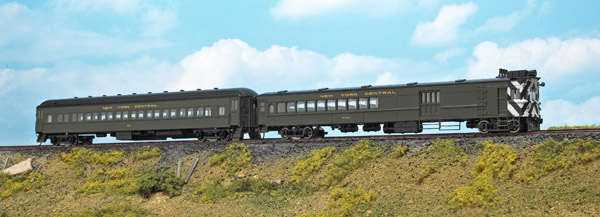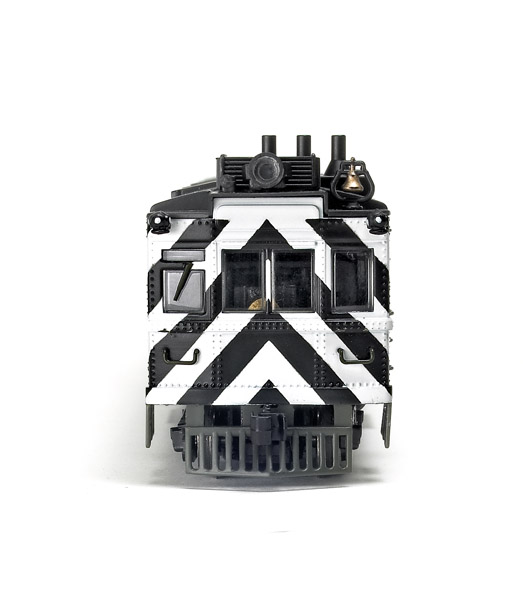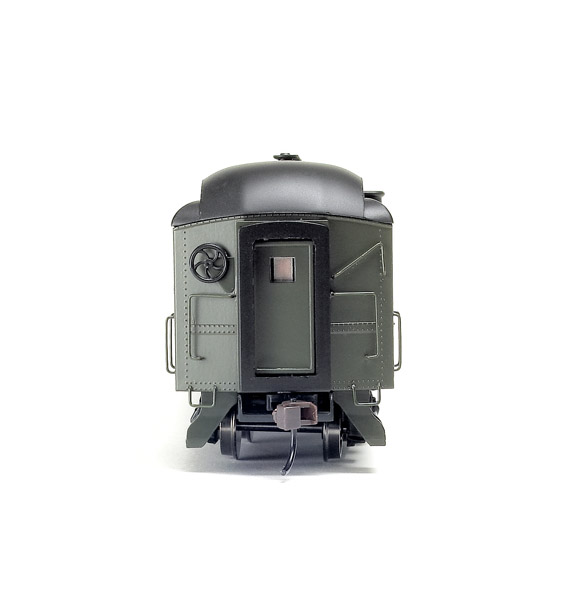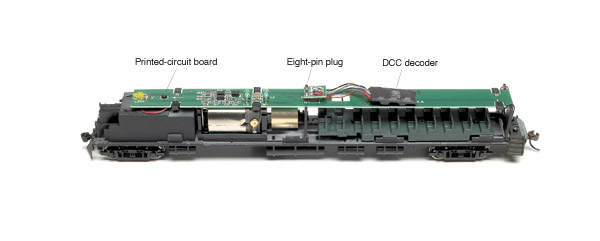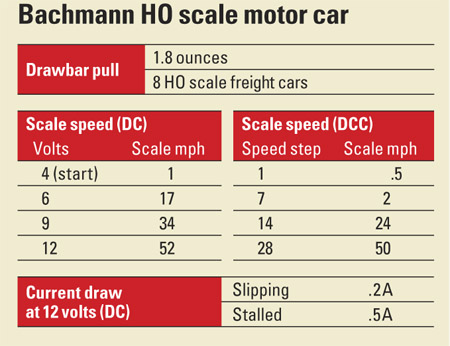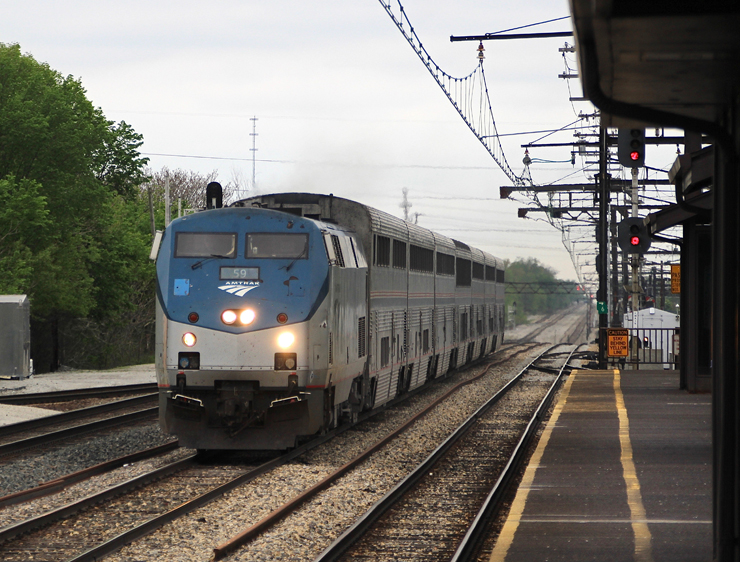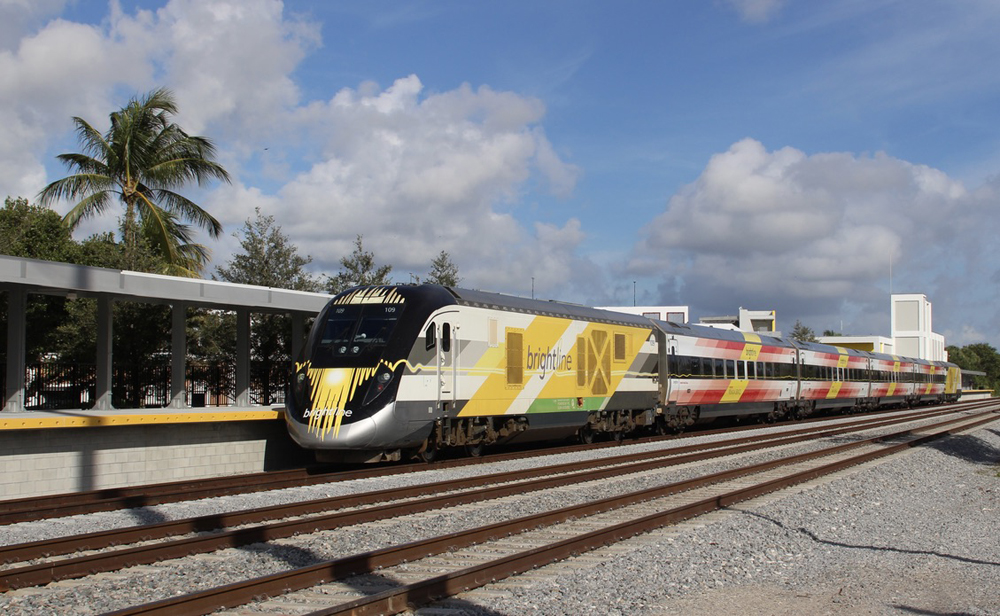Bachmann refers to its model as an Electro-Motive Corporation (EMC) gas-electric doodlebug. Although I couldn’t find an exact prototype for the model, the Bachmann doodlebug’s appearance does capture the look of EMC motor cars built in the 1920s and 30s. In fact, no two EMC motor cars were exactly alike. Electro-Motive built the drivetrain, but contracted other manufacturers like St. Louis Car Co. and Brill to build the car bodies.
The trailer coach also doesn’t match a prototype. The car matches the major dimensions, window arrangement, and roof vent placement of a Pennsylvania RR P70 coach. The model is missing a pair of rivet seams from the center of each side when compared to a prototype P70. The car rides on four-wheel trucks with a scale eight-foot wheelbase.
Both models have crisp molded detail and glazing in all the windows. Separately applied parts include wire grab irons and steps. The diaphragms are made of rubber.
The paint scheme on the Bachmann doodlebug is reminiscent of prototype New York Central motor cars. The color separation between the black and white safety stripes on the front is well defined. The lettering on the model uses New York Central’s post-1940 font.
The motor and flywheel are mounted on the frame, and a shaft connected to a worm transfers power to the gearbox on the front truck. The gearbox housing is die-cast metal. An additional die-cast metal weight is between the gearbox and the motor. The 40-seat passenger compartment is a single part molded in green plastic.
A printed-circuit (PC) board is attached to the weight and runs over the motor, flywheel, and passenger compartment. A light-emitting diode (LED) on top of the PC board illuminates the headlight, while two LEDs under the PC board light the passenger compartment.
A Bachmann E-Z Command DCC decoder is attached via a wiring harness with a plug into an eight-pin socket on top of the PC board. The decoder measures 5/8″ x 1″.
The plastic body shell of the trailer coach is press-fit to the car’s plastic frame. The coach’s interior detail consists of 20 rows of seats molded in a single piece of green plastic. A PC board along the coach’s ceiling has two LEDs for interior lighting.
I also ran the model with a Model Rectifier Corp. Prodigy Advance DCC system. Using 28 speed steps, the doodlebug didn’t move until speed step 8. After setting the starting voltage (CV2) to 255 the model moved smoothly at less than 1 scale mph in speed step 1. The decoder also supports 128 speed steps.
In DCC I could turn the headlight on or off (function 0) or dim the headlight (function 1). I appreciated that both the motor car and the coach have all-wheel electrical pickup. The lights didn’t flicker going through turnouts or crossings.
It’s good to see the Bachmann Spectrum doodlebug available again in HO scale, and the upgrades, especially the LED lighting, make it better this time around.
Price: $215
Manufacturer:
Bachmann Trains
1400 E. Erie Ave.
Philadelphia, PA 19124
www.bachmanntrains.com
Road names (two road numbers each): New York Central, Baltimore & Ohio, Boston & Maine, Maryland & Pennsylvania, Seaboard Air Line
Era: 1920s to 1960s
Features:
All-wheel electrical pickup on motor car and trailer
Dual-mode DCC decoder
E-Z Mate Mark II operating knuckle couplers at correct height
Five-pole skew-wound motor with brass flywheel
Minimum radius: 18″
RP-25 contour metal wheels in gauge
Weight: 111/2 ounces (motor car)





